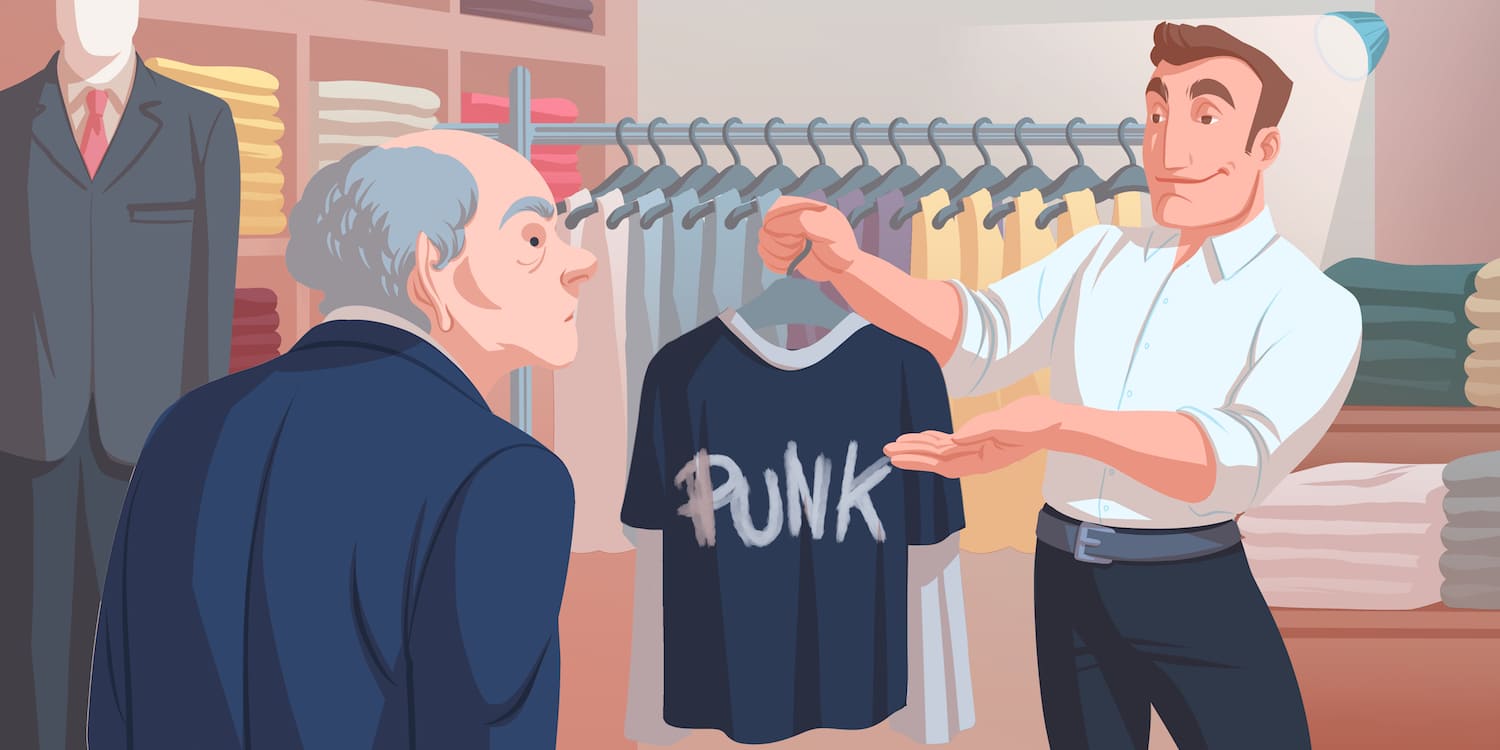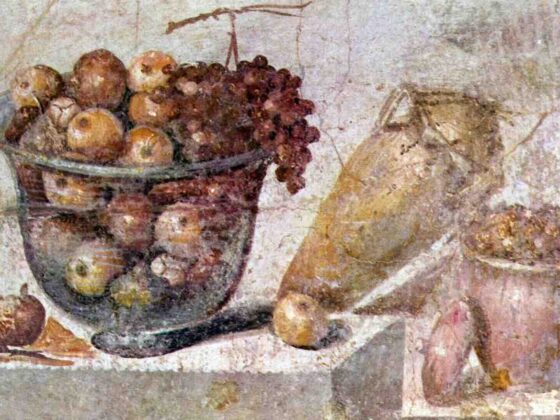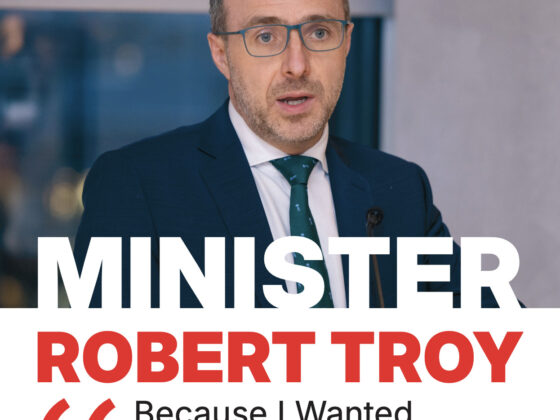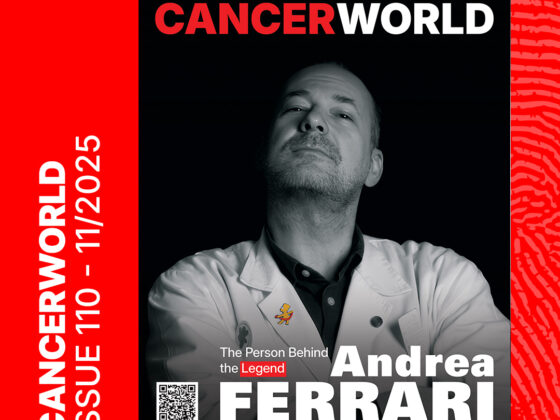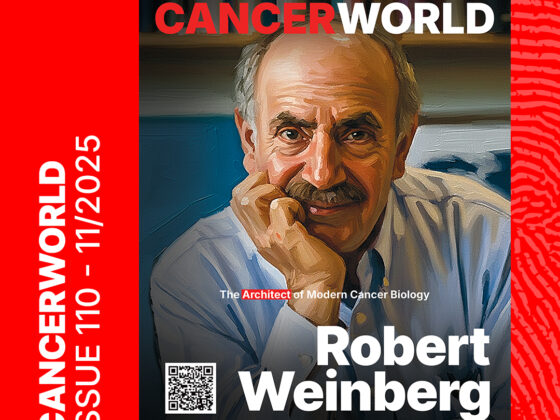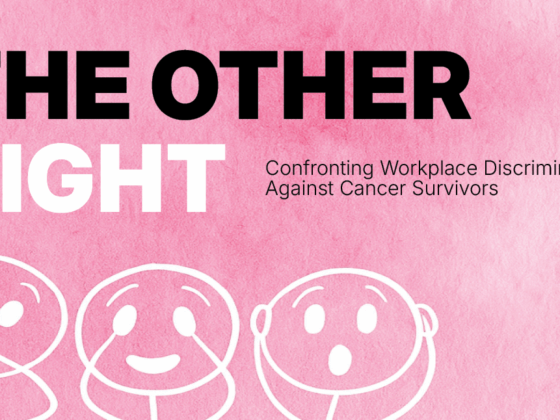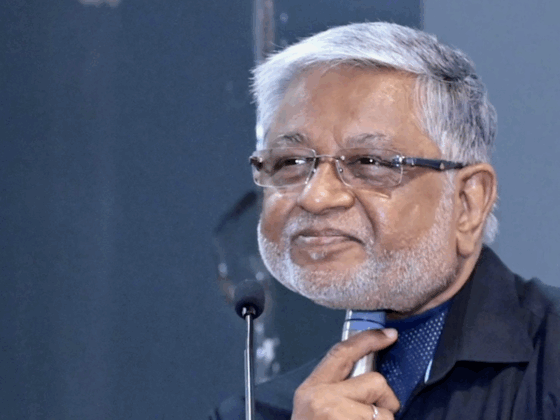Hans Wildiers is frustrated. “This drug is well-tolerated in older persons – this is a very frequent conclusion in publications. And it is often not a correct conclusion,” says the immediate past president of SIOG, the International Society of Geriatric Oncology, who works at the University Hospitals Leuven, in Belgium.
Half of all new cancer cases are diagnosed in patients over the age of 65, a figure that is projected to rise to 58% by the year 2030. Yet most anti-cancer drugs are licensed based on data from younger patients, with little data available on their efficacy and toxicity in older patients. A SWOG Cancer Research Network analysis found that, while nearly 50% of breast cancer cases in the US arise in people aged 65 or older, more than 90% of the patients included in major breast cancer trials were younger than that.
This can leave the oncologist guessing as to how the frail, older patient sitting across from them might benefit from a given treatment, says Siri Rostoft, a geriatrician, with a special interest in geriatric oncology, at Oslo University Hospital. “We have to extrapolate from the trial, and then add the patient’s frailty status as well as the patient preference into the equation.” This is not a new problem, and the lack of progress makes it all the more frustrating . “The percentage of older patients in clinical trials has not increased, even though this has been a topic for at least 15 years. We are still not even close to improving.”
The first hurdle is that the same drug may affect young and old patients differently. “An older patient isn’t just a young patient plus some life years added on top,” says Raul Cordoba, head of the Lymphoma Unit at the Fundación Jiménez Diaz University Hospital, Madrid, and Chair of the scientific working group on Aging and Hematology of the European Hematology Association. Slower metabolism, slower renal clearance, as well as other physiological differences may mean that the median dose suitable for a younger patient is too high for an older patient. “Older cells may also be more vulnerable to the same drug dose and less able to restore DNA damage,” adds Wildiers.
Secondly, as patients grow older, heterogeneity increases. “Everybody knows someone who is 95 years old and really fit, and someone who is 70 and quite frail – age alone does not say everything about your fitness,” says Rostoft. As age increases, the number of frail patients increases. With age comes comorbidity, and sometimes functional and cognitive decline – and frailty can be defined as a cumulative deficit disorder of several geriatric problems that can occur during ageing. “This makes geriatric oncology so complex: You are not only tackling the cancer, but you also have to take into account all other health problems, attrition and cognitive decline,” explains Wildiers.
“Often, older patients aren’t even offered a choice to participate in a clinical trial, because of the clinician’s decision not to”
In some cases, frail patients are not included in trials, even when the inclusion and exclusion criteria would allow for it. “This is an offshoot of paternalistic medicine,” says Cordoba. “Often, older patients aren’t even offered a choice to participate in a clinical trial, because of the clinician’s decision not to. We need to change the mindset: We need older adults to enrol, because we need the data.”
This is particularly unhelpful when the trials are focused on cancers types that predominantly affect older patients, such as diffuse B cell lymphoma, as Natacha Bolaños, who works for the patient organisation Lymphoma Coalition, points out. In these situations, the low representation of elderly patients admitted into clinical trials creates the paradoxical situation that cancer treatments are not tested in the population with the highest incidence, “This means we don’t have the data for those patients for whom we need it the most.”
Even when trials do take steps to include a proportion of older patients, they are often not representative of the wider patient population in that age group, says Rostoft. “Sometimes, trials conclude that a treatment is well tolerated in older patients, because they also included 80-year-olds. But when you look at the data, these are tightly selected 80-year-olds, who are fit… The data is important, because it shows that patients who are fit but old chronologically benefit from and tolerate the treatment. But what about all the others at that age that may or may not tolerate it?”
Poor reporting of toxic effects in older patients is a particular problem, which Wildiers discusses in a recent opinion paper in The Lancet Healthy Longevity. He points to many examples of newly registered anticancer drugs being perceived as well tolerated in older populations based on inappropriate generalisation. As an example, the BOLERO-2 trial reported on the effectiveness of combining everolimus with exemestane in the treatment of metastatic endocrine-sensitive breast cancer. The trial concluded that the combination treatment is well tolerated in older patients. “But when reading the results in detail, toxicity was higher in older patients, with a higher number of serious adverse events, treatment discontinuation, and an increased probability of fatal adverse events. And no analysis was available on whether these adverse events occurred more frequently in frail older patients than in fit older patients.”
“New anticancer agents should be evaluated in older frail patients specifically before concluding that they are well tolerated in all older patients”
A follow-up phase IIIb study was then meant to evaluate the combination’s effectiveness in a real-life population. “But also there, they made the same mistake. They did not measure frailty, did not correlate frailty with toxicity, concluded that the drug is ‘feasible’ in older patients, but detailed reading of the data also here shows clearly increased toxicity, discontinuation rates and toxic mortality.” It is likely that these toxicity issues are mainly present in the frail older persons, but if frailty is not measured or frail patients not included, it is not possible to make this statement, Wildiers points out. “And it is certainly not acceptable to conclude that the drug is ‘well tolerated’ in older persons. Tolerance of new anticancer agents should be evaluated in older frail patients specifically before concluding that the treatment is well tolerated in all older patients. Clinicians should be aware that age-related reports of key trials are subject to a substantial risk of bias, which might affect the perception of the safety and efficacy profile of novel treatments in the general older population.”
Always measure frailty
Focusing on age is easier than looking at frailty, as age is absolute. However, several tools are in use to gauge a person’s frailty status. Geriatric assessment objectively measures domains such as cognition, functionality, depression, nutrition and polypharmacy. Acknowledging that clinicians’ time is often limited, Wildiers suggests that geriatric screening tools be integrated into the clinical routine and especially clinical trials. “My vision is that a short screening test is applied to all patients, done by any member of the healthcare team.”
An easy and quick tool, such as the Geriatric 8 (G-8) health status screening tool, could give an indication of which patients are likely to be frail. “This assessment takes just two minutes, and covers the bases of weight loss, appetite decrease, functionality, chronological age, self-rated health, communication and cognitive decline.” Patients predicted to be frail would be followed up with a more comprehensive, full geriatric assessment by a health care worker with geriatric expertise to identify the issues at play, especially in very complex and very frail patients. Geriatric assessments also have the advantage of not only focusing on comorbidities, but including functionality and issues of daily living, adds Cordoba.
A geriatric assessment can be also an opportunity to uncover problems an oncologist may be unaware of, including cognitive problems. “If you don’t catch that a patient has a cognitive impairment before you start treatment, this might lead to a lot of trouble down the road, such as failing to take medicines or missing follow-up visits,” explains Rostoft.
The assessment might also open a window of opportunity: four randomised trials presented at ASCO have shown that targeted geriatric interventions can improve clinical outcomes, reports Wildiers. “If malnutrition is uncovered, we need to look for a cause and a solution. Sometimes it is an easy fix, like improving the fit of their teeth. But if the patient keeps on being malnourished, he will experience more toxicity. By addressing the underlying problems, we may help increase the chance of survival for that patient.”
Including frailty assessments in trials would increase their utility for geriatric patients ‒ first of all by at least having frailty data to include in the analysis. “This is important so that we can correlate survival and toxicity with the level of frailty – and it has to be done prospectively, in a clinical trial, not with so-called real-world data,” says Cordoba. Of course, strict inclusion and exclusion criteria with an age cut-off would have to be abolished as well.
In practice, geriatric assessments also influence clinical decision making, reports Wildiers. If the patient is found to have higher frailty than expected, the treatment strategy can be adapted accordingly, for example by providing a less toxic therapy. Applying a similar strategy of adapting to the patient’s needs could also increase the numbers of frail patients included in clinical trials and their utility for geriatric patients.
“One option is to design trials in which patients deemed too frail for a full-dose regimen are assigned to a different dose, which they are more likely to tolerate”
“Frequently, I wouldn’t choose to enrol a frail patient in a clinical trial, because one arm of the trial is too toxic. If I know that my patient will not be able to tolerate the treatment given in a control arm because of its toxic side effects, I cannot include my patient in this trial,” says Wildiers. One option he puts forward is to design trials specific for older frail patients, in which patients deemed too frail for a full-dose regimen are assigned to a different dose, which they are more likely to tolerate. Alternatively, a specific arm of a trial with less toxic doses could be opened specifically for frail patients. Allowing frail patients to receive doses of therapy that they can tolerate should not be a big issue, Cordoba points out. “Already, the dosing information in clinical trials allows for dose adjustments in case of adverse events. Currently, such adjustments are not included for frailty. It would be easy to, up front, include dose adjustments for frail patients!”
One other change proposed by Cordoba is to reduce the complexity and administrative burden in other aspects of clinical trials, to free up time and opportunities to conduct frailty assessments and report adverse effects. “Reporting adverse effects in trials is a lot of paperwork. Older frail patients are more likely to experience adverse effects, and so enrolling a frailer patient in a trial will mean more work for the oncologist. So if we reduce the burden in other areas of the trial, we will have the time to adequately accompany our frail patients through clinical trials.”
Ask about priorities
Clinical trials typically focus on endpoints such as overall survival or progression-free survival. But do these endpoints matter to geriatric oncology patients? “We haven’t achieved an alignment between outcomes and what older patients would be interested in getting from treatment,” says Bolaños. Every two years, the Lymphoma Coalition conducts a worldwide survey, asking the patients they represent for input. “For older patients, what matters is often not the length of survival, but the preservation of independence and of quality of life. Many patients are interested in maintaining their autonomy, social function and physical function – more so than in other outcomes, like overall survival.” For an older patient, this might mean prioritising living independently. “Cancer treatments can lead to memory loss, issues with balance or movement, poor nutrition. These issues do not mean the same to young patients as to old patients, who may already have problems in these areas,” Bolaños points out.
“Cancer treatments can lead to memory loss, issues with balance, poor nutrition. These do not mean the same to young patients as to old patients”
Rostoft warns that, in any case, the individual patient preference has to guide decision making. “Of course, we also see patients who want to live as long as they can, for example to make it to a wedding – so it is different from person to person. But on a group level, we see that most older patients prioritise functional status. As long as trials don’t address these outcomes, it’s more difficult to make shared decision making. If we don’t have the data, how can we inform the patients according to their wishes?”
How can trials be designed to take into account what some patients see as treatment success? One option is to incorporate slightly unusual measures as outcomes. Rostoft cites the GO2 study – which sought to optimise chemotherapy for frail patients with advanced gastro-oesophageal cancer – as exemplary in using relevant composite endpoints. “The trial also looked at treatment utility. Basically, they asked the patients: Do you think it was a good idea to get this treatment? I like this way of thinking about success. When asking whether or not a treatment was successful, the answer must lie with the patient.” And Cordoba insists that this shouldn’t be relegated to the substitutes’ bench. “Quality of response and quality of life have to be co-primary objectives, not exploratory or secondary outcomes.”
Facilitating trials participation
One barrier to participating in clinical trials is the simple act of getting there. “For frail elderly patients, taking part in a clinical trial can present logistical challenges, such as having to make additional trips to the hospital for tests and procedures,” says Bolaños. Designing informed consent forms so that frail older patients easily understand what is at stake would be one step. Bolaños also suggests taking some of the learnings from the Covid pandemic, such as the increased use of telemedicine, or offering infusions or other procedures in an outpatient setting, to make participation easier for frail older patients. And sometimes it’s the little things, Rostoft points out. “When you are frail, everything takes a little bit longer. Just undressing for a procedure may take that much longer.”
“There should be an obligation by regulators to develop specific safety studies in frail people”
Whichever changes are made, more transparency is needed, says Rostoft. One change she wishes to see is that all medical journals ask for frailty data when publishing trial results in older patients. Of course, the role of regulators is crucial. “The situation for frail old patients is going to change only if regulators do something,” says Cordoba. He recommends making the inclusion of information on frailty mandatory, and that a dose adjustment according to frailty status is demanded by regulators at the outset. And there should be an obligation by regulators to develop specific safety studies in frail people, says Wildiers. “These could be conducted before or within the first few years after a drug is approved. Clinical trials need to report frailty status – this will give us a better view on the benefits and safety of therapies in frail old patients with cancer.”
Are older patients willing to participate in trials? Anecdotal evidence suggests that there is interest. “In my experience, older adults are very willing to participate, as long as it’s not too demanding,” says Rostoft, who recalls one patient in particular. “He was so happy I asked him about enrolling in a trial, and said: Wow, it’s great that you want do research with me! So he had really no expectations, and thought it was great to be part of research.”
Illustration by Alessandra Superina


